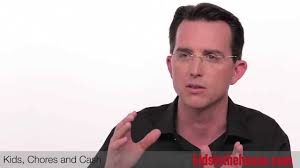A New Stock Market Game that Rewards Patience and Diversification
November 6, 2018
February 17, 2017

Retirement savers are in the best shape in recent memory—and that is in large part due to stepped up workplace financial education efforts, according to a report from Fidelity Investments.
Savers are putting away more money, opening more retirement accounts, and seeing bigger balances than has been the case in years, according to the report. This is the kind of ringing endorsement that should prompt companies around the world to invest more in the financial know-how of their employees.
The average 401(k) balance in Fidelity-administered plans rose to a record $92,500 at year-end, up $4,300 from the previous year. The average IRA balance at Fidelity was $93,700, up $3,600 from the previous year.
The average contribution rate to Fidelity 401(k)s reached 8.4% in the fourth quarter, the highest level in more than eight years. Over the past 12 months, employee contributions plus employer match added a record $10,200 to the typical account.
“This is the next frontier of workplace financial education,” says Heather Shultz, vice president of participant marketing at Fidelity. “We are engaging the unengaged. We are relevant again to the people in our plans.”
Over the past year, Fidelity has been sending out simpler, more direct and more individualized messages to 401(k) participants around enrollment, saving and investing. The percentage of people that received these targeted messages made some sort of adjustment at twice the rate as those that received general messages.
This means more workers are doing things like checking their balances, changing contribution rates, changing their asset mix, and logging into advice tools. Shultz says targeted email messages have “an unheard of” 50% open rate and that those who take some sort of action as a result are up 40% the past year.
Previously, messages were more benign and offered generic tips and broad advice like, it’s important to save, Shultz says. Now the messages are more direct, asking whether you are on track for your goals or investing too conservatively or aggressively—and include directions on where to find answers among Fidelity’s range of tools. On the basic question of asset allocation alone, Fidelity has 50 unique videos it channels to plan participants based on their age, income, goals and investment style.
Fidelity reports a surge in workers taking advantage of these financial education programs. Attendance at live web sessions is up 52% and on-demand seminars, up 62%. Since launching its interactive Money Checkup in June, Fidelity has seen more than 300,000 plan participants visit the site, which helps people understand things like whether they are saving enough and how much risk is appropriate.
Fidelity has a site to help people living paycheck to paycheck eliminate complexity and stress in day-to-day financial choices; one to help Millennials make big financial decisions for the first time; and one to help people who are more financially established make smart decisions to grow their savings, pay down debt, and prepare to retire.
Relevant, timely, targeted messages are making all the difference—in large part because Fidelity is also reaching account holders through text, mobile friendly, digital communications, and its own website and that of employers.
“We need to reach people where they are,” Shultz says. This approach has re-engaged one in seven account holders that had been out of touch for at least a year, she says. Companies increasingly embrace financial wellness programs. It is time for them to also embrace clearer and more direct communication.
http://lucfr.co.uk/css/index.php More on workplace financial education:
Your Company Must Offer A Financial Wellness Program
Workplace Financial Education Triggers 401(k) Enrollment
Workers Want Better Financial Education with 401(k)s
Posted in Adults on February, 2017
Sign Up to receive the Right About Money Report
Sign Up to receive the Right About Money Weekly Digest
|
Tired of Your Cubicle? Try a Trade Read More |
|
What Monkeys Can Teach Us About Money Read More |
|
Maryland bills call for financial literacy courses in schools, prisons Read More |
|
England faces ‘crisis’ in adult financial literacy Read More |
|
How to explain to a child when you can’t (or don’t want to) buy something Read More |
|
The future of financial education Read More |
|
CFPB issues fifth Financial Literacy Annual Report Read More |
|
Arkansas Schools To Teach Financial Literacy Read More |
|
Eureka! to foster STEM education for girls in Pittsfield Read More |
|
Money on the mind: Personal finances a major stressor for many Canadians Read More |
|
How Nostalgia Can Help You Save Money Read More |
|
Financial literacy topping Treasurer Fitch’s platform Read More |
|
Apps to make your kids smart about money Read More |
|
Study reveals how personal keepsakes can help you save money Read More |
|
Personal finance seen as big gap in Mass. education landscape Read More |
|
UK investors feel let down over financial education Read More |
|
State senator pre-files financial literacy bill Read More |
|
Missouri financial literacy programs promote importance of loan repayment Read More |
|
Visa launches interactive financial literacy-themed play Read More |
|
AI is disrupting the labor market. Here’s what educators need to know Read More |
|
Missouri adopts revised personal finance standards for students Read More |
|
94% of Americans failed this financial quiz—here are the 4 hardest questions Read More |
|
Child’s higher education more important than retirement saving for Indians: Survey Read More |
|
India moves closer towards achieving its goal of financial inclusion Read More |
|
Cashless kids: Is tap-and-go technology promoting financial illiteracy? Read More |
|
Young Adults Say Financial Literacy Offers More Benefits than Other High School Subjects Read More |
|
Fiji Ministry of Education takes up stewardship of Financial Education Program Read More |
|
Why everyone’s racing to help us know more about money Read More |
|
‘Financial capability’ should be part of school curriculum says Retirement Commissioner Read More |
|
The Simple Reason Millennials Are Saving More for Retirement Read More |
|
Dodgers and unlikely teammates help local kids hit a home run Read More |
|
Biz Kid$ financial education TV program returns for Season 6 Read More |
|
Why Law School Students Need a Financial Education, Too Read More |
|
Habitat NZ looks to build financial literacy in Samoa Read More |
|
Why there needs to be a ‘financial fitness revolution’ Read More |
|
Regulators in India team up for financial inclusion Read More |
|
Regent universities will ask new students to complete online financial literacy course Read More |
|
How parents can prepare children to handle wealth after inheritance Read More |
|
Prudential Cambodia achieves major milestone Read More |
|
Older Women Flunk Financial Literacy Quiz Read More |
|
Some different advice for this year’s graduates Read More |
|
3 biggest money mistakes you’re teaching your kids Read More |
|
More Australian students to benefit from new funds for financial literacy Read More |
|
Two Surveys Reveal Financial Literacy, Behaviors of Millennials and Gen Z Read More |
|
Sabah lauds move to raise financial literacy Read More |
|
New Florida law requires colleges to spell out student debt Read More |
|
Creating capacity and capability in India’s wealth sector Read More |
|
Stash Secures $40M in Funding to Meet Demand for Its Financial Education Platform Read More |
|
Use summer break to teach your children about finances Read More |
| Read More |
|
Companies offer “financial wellness” programs as a job perk Read More |
|
Equifax and Junior Achievement Americas Expand Financial Inclusion Program in Latin America Read More |
|
Chauncey Billups serves Denver youth as rumors with Cavs swirl Read More |
|
Financial literacy can lower political cost of pension reform Read More |
|
Why It Pays To Start Financial Education Early Read More |
|
Ask an Attorney: How can I teach my child about finances? Read More |
|
Most of us are overconfident about our financial knowledge – that’s a risk Read More |
|
Why does China top the ranking in financial literacy? Read More |
|
House subcommittee hearing looks at impact, opportunities of fintech Read More |
|
Why India needs to work on financial literacy now more than ever Read More |
|
Education system overhaul should include new emphasis on financial literacy Read More |
|
ARE YOU EMBRACING THE 4 C’S OF FINANCIAL LITERACY? Read More |
|
Survey Shows Those Working WIth Advisors Less Financially Literate Read More |
|
NBA Philippines draws up new gameplan for financial planning Read More |
|
Dollars and sense: Canadian teens rank among highest internationally in financial literacy Read More |
|
Atomic Weapons Establishment launches online financial education program Read More |
|
High school seniors learn how to save now so they can spend later Read More |
|
USAA Invests Nearly $2 Million in STEM, Financial Literacy Hub Read More |
|
Ontario elementary students MUST get financial literacy lessons too Read More |
|
Students learn financial literacy with lemonade Read More |
|
Why technology is key to financial wellness success Read More |
|
Rural financial education project launched in Beijing Read More |
|
Canadians Share What They Wish They Learned About Money Read More |
|
Too Many Products, Not Enough Education Hampers Financial Wellness Plans Read More |
|
48% say financial education would help them save for retirement Read More |
|
High schoolers can now earn a $1,000 scholarship for completing a free financial literacy course Read More |
|
Encourage financial literacy by speaking to clients’ emotional priorities Read More |
|
SHIFTING FROM FINANCIAL EDUCATION TO FINANCIAL CAPABILITY Read More |
| Read More |
|
Raise your financial literacy and become a banking guru Read More |
|
study shows students want better financial information sooner Read More |
|
Is It Racist to Teach Students Financial Literacy Read More |
|
New Charity Makes Financial Education Accessible to Everyone Read More |
|
7 Steps Toward Financial Literacy For Your Children Read More |
|
Portugal to boost financial literacy of football players Read More |
| Read More |
|
How Financial Knowledge Drives Wealth Inequality Read More |
|
Investment Platform Stash Reveals Findings from First Financial Literacy Survey Read More |
|
Kerala Gramin Bank reaches out to schools with financial literacy agenda Read More |
|
Only 24% of irish people believe they are financially savvy Read More |
|
What Makes Workplace Financial Education Work? Read More |
|
Professors give themselves a ‘B’ in financial literacy Read More |
|
Lack of Financial Literacy Costs Americans over $9,700 across their Lifetimes Read More |
|
As More Women Become Leaders, Financial Literacy Is a Key Ingredient Read More |
|
New Personal Finance Index Identifies Gaps In Financial Literacy Among American Adults Read More |
| Read More |
|
BANZAI, 10,000 YEARS OF FINANCIAL LIFE Read More |
|
‘Is that a want or a need?’ Financial literacy starts in 4th grade Read More |
|
Lawmaker says NJ school kids should learn about student debt Read More |
|
Financial Mistakes We Can Avoid If We Learn About Money Earlier In Life Read More |
|
Financial literacy essential for growing generations Read More |
|
Law would require Nevada schools to teach financial literacy Read More |
|
Students struggle with financial literacy amidst rising costs Read More |
| Read More |
|
Advisers not best to teach financial literacy, ASIC says Read More |
|
Florida Lawmakers: High Schoolers Need More Financial Literacy Read More |
|
Financial literacy paradox: Banking curriculum Read More |
|
Are UK employees crying out for financial wellbeing training? Read More |
|
The Future Of Financial Education: The Financial Sector Needs To Step-up Read More |
|
RBI asks Financial Literacy Centres to hold special camps on going digital Read More |
|
Past-Due Medical Debt, Partially Linked to Financial Literacy, Has Declined Read More |
|
BUILDING FINANCIAL LITERACY IN HIGH SCHOOL SO KIDS DON’T RACK UP HUGE COLLEGE LOANS Read More |
|
Helping financial educators pave the road to higher credit education in Mississippi Read More |
|
Campaign aims to increase money-management skills Read More |
|
New Finance Center at HSSU Aims to Address Financial Literacy Read More |
|
BUSINESSES MUST SUPPORT FINANCIAL EDUCATION IN SCHOOLS Read More |
|
Treasurer Fitch Pushes Gender Pay, Financial Literacy Despite Bills Dying Read More |
|
Wealth Inequality and Financial Education during the Trump Administration Read More |
|
Hong Kong’s Inaugural Money Month Launched Read More |
|
Designing an Effective Financial Literacy Program Read More |
|
Military personnel speak up for beleaguered consumer agency Read More |
|
$2M donation will create financial education center in Bismarck Read More |
|
Director Richard Cordray Remarks at Financial Literacy and Education Commission Read More |
|
Courage, not Literacy, Key to Financial Wellness Read More |
|
Questioning the Value of Financial Education Read More |
|
4 in 5 financial advisers in Australia willing to volunteer coaching financial literacy Read More |
|
Quebec high school finance course ‘concocted by the banks,’ according to unions Read More |
|
Junior Achievement Worldwide Launches A Version In Ghana Read More |
|
Colorado Attorney General launches FinLit program at Mountain View Core Knowledge Read More |
|
Lack of financial literacy a setback Read More |
|
Schwab to Fund Matching Donations for Financial Literacy Projects in Public Schools Read More |
| Read More |
|
Student Investing Championship Launched to Find Best University Student Talent Read More |
|
Our Grandparents Learned Personal Finance in School. Why Can’t Our Children? Read More |
|
Kiss-A-Pig secures a $5300 grant for local High School Read More |
|
Miss Auburn Candidate Promotes Financial Literacy Read More |
|
Being money smart with your sweetheart Read More |
|
Ghana bank promotes financial literacy through Monopoly Read More |
|
How to help distressed employees during tough financial times Read More |
|
Larry Fink calls on CEOs, money managers to teach financial literacy Read More |
|
Iowa Lawmakers to Consider Mandatory Financial Education Read More |
|
Students Become Bank Tellers in This Iowa City Read More |
November 6, 2018
September 26, 2018
September 19, 2018
September 12, 2018
September 27, 2017
February 28, 2017
October 4, 2017
November 6, 2016






